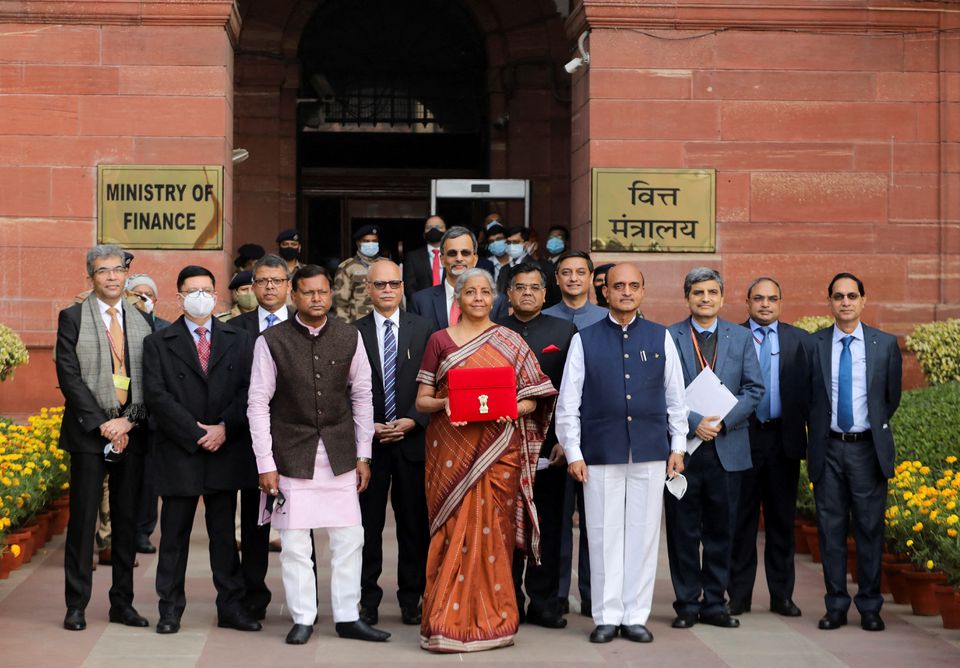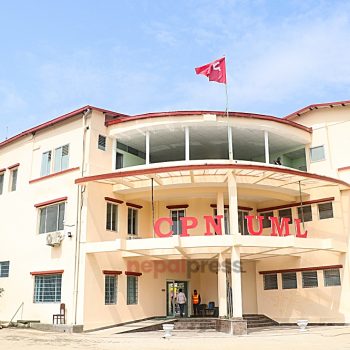India goes on a spending spree to boost economic growth
 NepalPress
NepalPress

India’s government will step up spending to 39.45 trillion rupees ($529.7 billion) in the coming fiscal year to build public infrastructure and drive economic growth, it said on Tuesday, but it involves a wider fiscal deficit than targeted and record borrowing, Reuters reported.
Asia’s third-largest economy has been on the mend after the government lifted mobility measures in June to curb the spread of coronavirus, after contracting 6.6% in the previous fiscal year.
Finance Minister Nirmala Sitharaman, presenting the annual budget to parliament, said total government spending in the 2022/23 fiscal year beginning in April will be 4.6% more than the current year.
Trillions of rupees will be allocated to expressways, affordable housing and solar manufacturing to put growth on a firmer footing, she said.
Growth is estimated to be 9.2% for 2021/2022, coming off the low base and slowing to 8 to 8.5% in the coming fiscal year, still the fastest among the world’s major economies.
The recovery from the pandemic has been swift but incomplete, officials say. Private consumption has been hampered by a lack of jobs, depleted household balance sheets and wider income inequalities.
Sitharaman said public investment must continue to take the lead and pump prime private investment and demand.
“The economy has shown strong resilience to come out of the effects of the pandemic with high growth. However, we need to sustain that level to make up for the setback of 2020/21,” she said.
She announced spending of 200 billion rupees ($2.68 billion) for a highway expansion programme and said 400 new trains would be manufactured over the next three years.
The fiscal deficit for the current year would be 6.9% of GDP, slightly more than the 6.8% targeted earlier, Sitharaman said, drawing concern in the bond market.
For the next fiscal year, India is targeting a deficit of 6.4% of GDP, hoping to build on higher tax revenues and privatisation of state firms including a share sale of giant insurer Life Insurance Corporation.
“It’s a big bang budget, but depends on where one stands on the bang perimeter. The massive ramp-up of capital spending and focus on infrastructure cements the budget’s credentials as a firmly growth-oriented one,” said Aurodeep Nandi, India Economist and Vice President at Nomura.
The 10-year benchmark bond yield surged 22 basis points to 6.87% from its pre-budget level, hitting levels last seen in early July 2019, while the rupee weakened to 74.8650 per dollar from 74.55.
Gross borrowing for 2022/23 was raised 40% to 14.95 trillion rupees. Gross borrowing by Prime Minister Narendra Modi’s government has more than doubled during the pandemic as New Delhi went on a spending spree to cushion the economy and provide relief to poor.
“The sharp rise in bond yields after the budget announcement is testament to the surprise for bond markets, which now will need to absorb this large borrowing,” said Nandi.
The blue-chip NSE Nifty 50 stock index (.NSEI) gave up some early gains to trade 0.76% higher at 17,472.35 by 0809 GMT, while the S&P BSE Sensex (.BSESN) was up 0.88% at 58,522.42.
LESS AMBITIOUS ON PRIVATISATION
The government sharply reduced its plans about privatisation of state-run companies after political criticism and market turmoil, expecting to raise 650 billion rupees from the privatisation programme next fiscal year, lower than the revised 780 billion target for the current fiscal year.
Initially, it had announced it would raise 1.75 trillion rupees this fiscal year. After years of efforts the government succeeded in selling loss-making carrier Air India last month, but failed to move forward on other companies and banks identified for sale.
It is now banking on the IPO of giant insurer Life Insurance Corporation, expected in the next few weeks, to bring revenues and reinvigorate the privatisation programme.
CRYPTOCURRENCY
Sitharaman also said the central bank would introduce a digital currency in the next fiscal year using blockchain and other supporting technology.
“Introduction of a central bank digital currency will give a big boost to the digital economy. A digital currency will also lead to a more efficient and cheaper currency management system,” Sitharaman said.
India’s central bank has voiced “serious concerns” around private cryptocurrencies on the grounds that these may cause financial instability.














